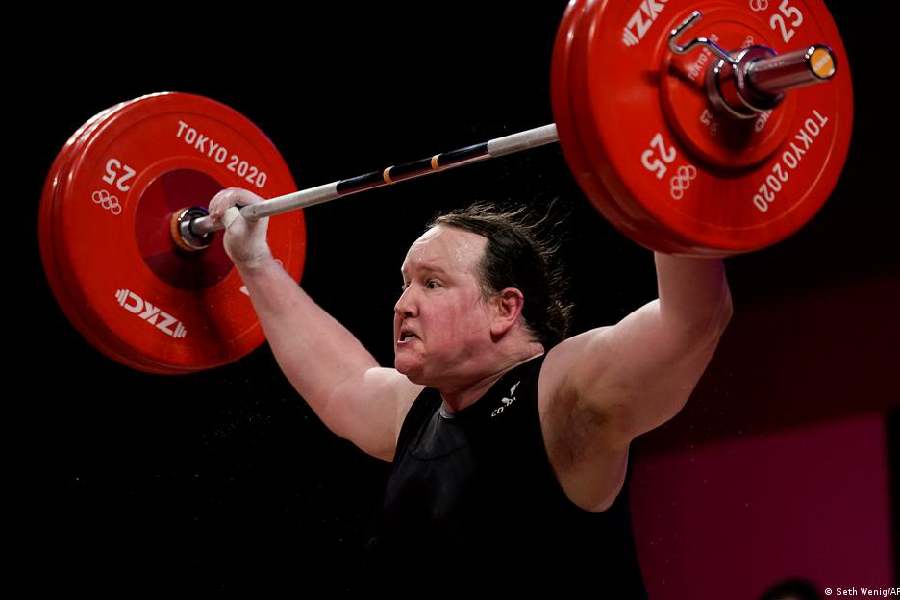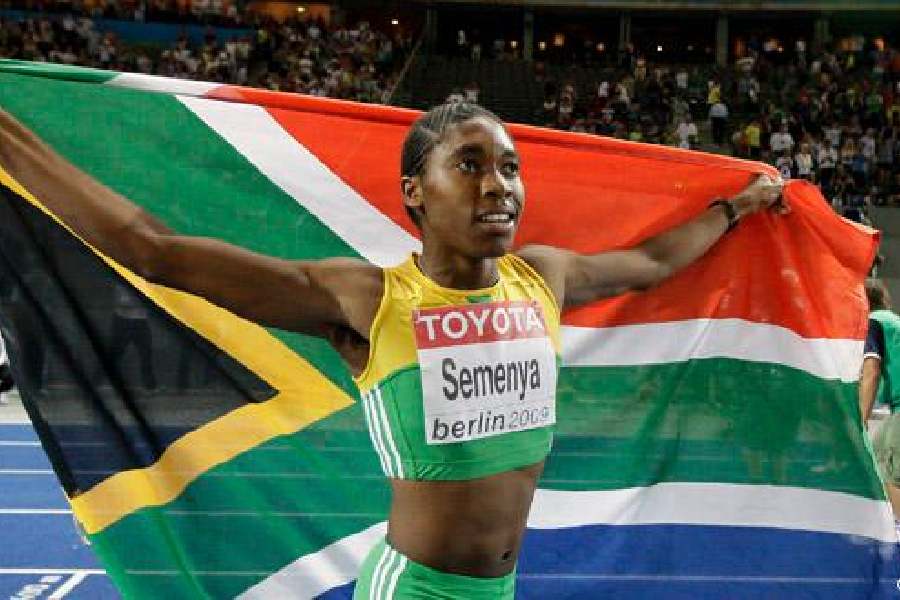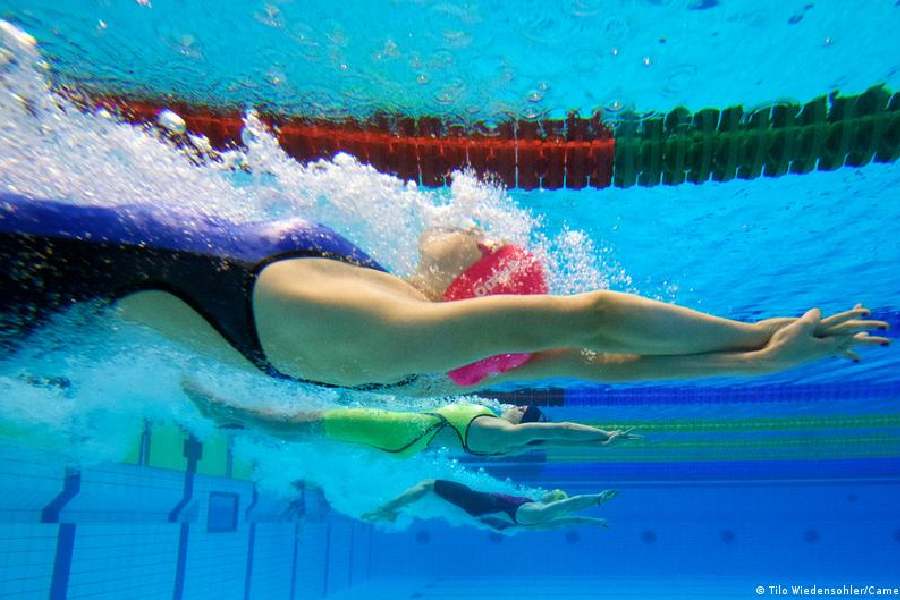Discussions about transgender rights and sports have been ongoing among athletes and sports federations for years. In a recent development, an upcoming World Aquatics Swimming World Cup event in Berlin will introduce a new, open category specifically for transgender athletes.
The move comes after transgender swimmer Lia Thomas made a splash in the sport when she won the US collegiate 500-yard freestyle title in 2022. She aims to make it to the 2024 Paris Olympics.
"I'm a woman, just like anybody else on the team," she told Sports Illustrated, an American sports magazine. "I don't know exactly what the future of my swimming will look like after this year, but I would love to continue doing it … I want to swim and compete as who I am."
Transgender women are said to have advantages over cisgender women when it comes to strength and endurance despite gender-affirming hormone therapy. Males have greater heart and lung capacity, more muscle mass and lower body fat. This is something that cannot be balanced out, according to a 2020 study by the British Journal of Sports Medicine.
Even after testosterone-suppressing treatment for two years, transgender women drew level with men in push-ups and running speed and outperformed females. The study found that despite testosterone-suppressing hormone treatment, this advantage persisted after the one-year period of testosterone suppression that World Athletics recommends for inclusion in women's events — and, according to other studies, even significantly longer.
In addition to swimmer Lia Thomas, New Zealand weightlifter Laurel Hubbard has also attracted attention. Hubbard's gender was assigned male at her birth in 1978. She went through puberty and later had gender-affirming surgery in 2012 at 23 years old.
Since then, she has competed in women's events. In 2021, she became the first trans woman to compete in the Olympics.

Laurel Hubbard became the first transgender woman to compete at the Olympics Seth Wenig/AP/picture alliance
The equally prominent case of South African track and field athlete Caster Semenya is different. She is not transgender but intersex and has one of several conditions known as differences in sex development, or DSDs, which cause naturally high testosterone in the typical male range.
Track officials have claimed that her condition amounts to having the typical male XY chromosome pattern and physical traits that make her "biologically male" and give her an unfair advantage. Semenya, who was identified as female at birth, raised as a girl and identifies as female, won her case this July in the European Court of Human Rights, which ruled she had been discriminated against by track and field rules that forced her to manipulate her hormone levels to compete medically.
World Aquatics, the international water sports federation, decided in 2022 to exclude trans women from women's races at major events such as the Olympics and World Championships. Exceptions will only be allowed if gender-affirming care was completed before turning 12, meaning before puberty. At the same time, the body committed to creating an open category for all swimmers that will debut at the World Cup event in Berlin starting on October 6 with 50- and 100-meter races in all swimming styles.

South African runner Caster Semenya has refused to undergo artifical testosterone treatments AP
In track and field, trans women have not been allowed to compete in women's world ranking competitions since March 31, 2023 if they went through what the governing body World Athletics called "male puberty." This rule applies regardless of athletes' current testosterone levels.
On the other hand, testosterone concentration in the blood has long been decisive for the eligibility of women with DSDs like Caster Semenya. The hormone must not exceed a concentration of 2.5 nanomoles per Liter (nmol/L) in the 24 months before the relevant competition. Despite winning her case at the European Court of Human Rights, Semenya has not been able to compete since 2019 because she has refused to artificially suppress her testosterone as the rules require.
At the German Football Association (DFB), regulations concerning trans, intersex and non-binary players stipulate that those whose civil registration documents are marked as "diverse" or "not stated," along with those who receive gender-affirming care, "will in the future be able to decide for themselves whether they should be granted playing rights for a women's or men's team." This also applies to transgender players "as long as the sporting activity while taking medication does not affect the health of the person concerned."
In tennis, current rules allow transgender women to compete in Women's Tennis Association (WTA) events. The players must declare "that her gender identity is female," a declaration that "cannot be changed ... for a minimum of four years." Additionally, the players must have undergone hormonal treatment for transitioning and must maintain a testosterone level "below 10 nmol/L for at least 12 months prior to her first WTA tournament."
Former tennis star Martina Navratilova absolutely does not understand allowing transgender athletes in women's competitions. When Alicia Rowley, a 56-year-old tennis player, won an over-55 tennis tournament organized by the United States Tennis Association (USTA) in August, Navratilova criticized Rowley's participation in a post on the social media platform X.
"Come on @USTA. Women's tennis is not for failed male athletes — whatever age. This is not right and it is not fair. Would this be allowed at the US Open this month? Just with self ID? I don't think so..." Navratilova wrote.
Including an open category at the Swimming World Cup event in Berlin drew a different kind of criticism.
"We are baffled that the establishment of a special category is being sold as an inclusion achievement," said Mara Geri from the Lesbian and Gay Federation in Germany (LSVD). She added that "forcing" transgender people into a separate category is much more of "a step back in the fight for acceptance and equality."
In football, there is more acceptance of the DFB's decision regarding their transgender policy.
"The DFB underlines the efforts of acceptance and participation of the LGBTQ community in football. Under the new rules, football can prove its function as a role model," said Sven Lehmann, Germany's Commissioner for the Acceptance of Sexual and Gender Diversity.











